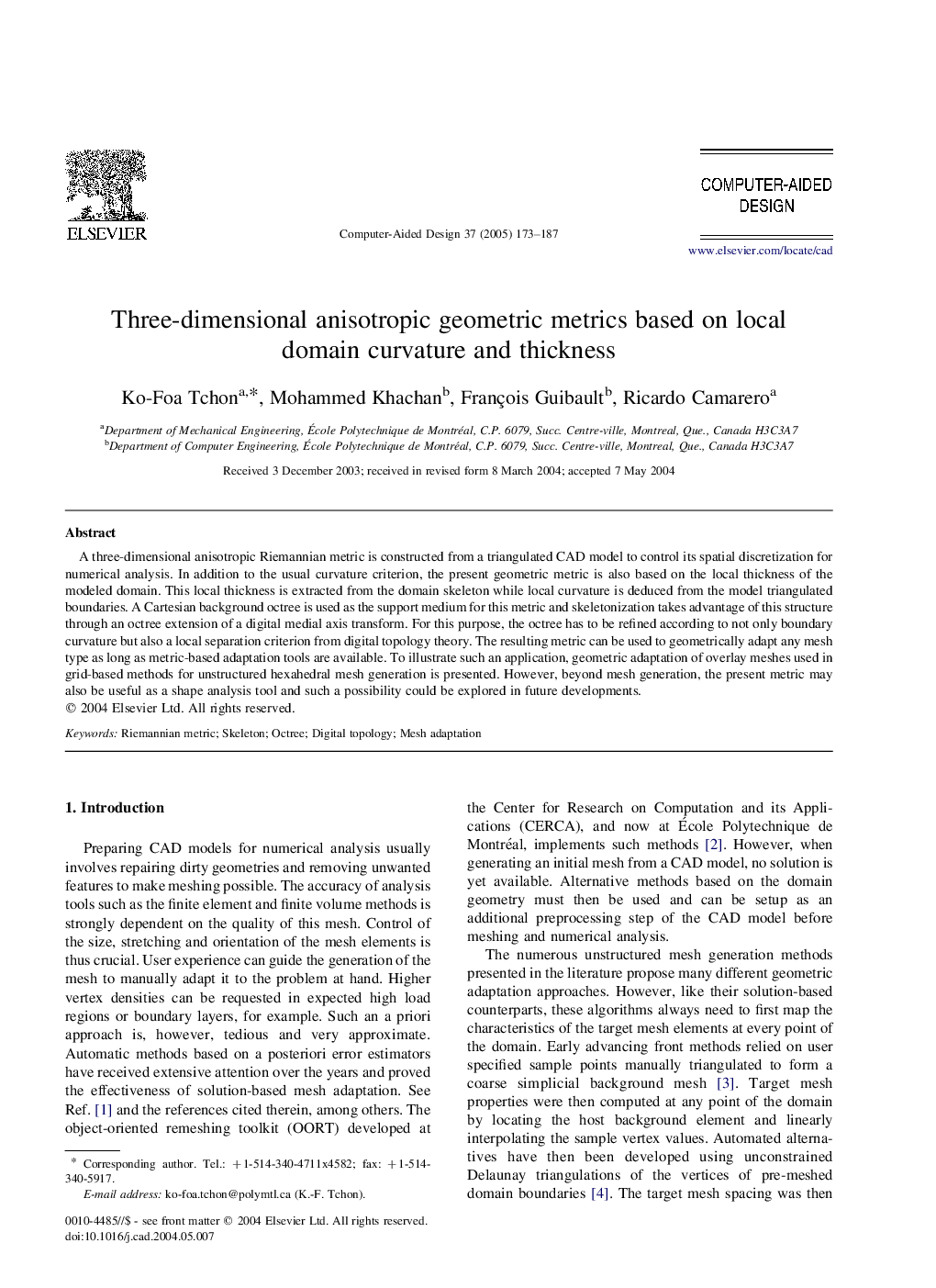| Article ID | Journal | Published Year | Pages | File Type |
|---|---|---|---|---|
| 10335637 | Computer-Aided Design | 2005 | 15 Pages |
Abstract
A three-dimensional anisotropic Riemannian metric is constructed from a triangulated CAD model to control its spatial discretization for numerical analysis. In addition to the usual curvature criterion, the present geometric metric is also based on the local thickness of the modeled domain. This local thickness is extracted from the domain skeleton while local curvature is deduced from the model triangulated boundaries. A Cartesian background octree is used as the support medium for this metric and skeletonization takes advantage of this structure through an octree extension of a digital medial axis transform. For this purpose, the octree has to be refined according to not only boundary curvature but also a local separation criterion from digital topology theory. The resulting metric can be used to geometrically adapt any mesh type as long as metric-based adaptation tools are available. To illustrate such an application, geometric adaptation of overlay meshes used in grid-based methods for unstructured hexahedral mesh generation is presented. However, beyond mesh generation, the present metric may also be useful as a shape analysis tool and such a possibility could be explored in future developments.
Related Topics
Physical Sciences and Engineering
Computer Science
Computer Graphics and Computer-Aided Design
Authors
Ko-Foa Tchon, Mohammed Khachan, François Guibault, Ricardo Camarero,
